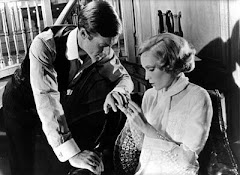
During Prohibition, the manufacture, transportation, import, export, and sale of alcoholic beverages were restricted or illegal. Prohibition was supposed to lower crime and corruption, reduce social problems, lower taxes needed to support prisons and poorhouses, and improve health and hygiene in America. Instead, Alcohol became more dangerous to consume; organized crime blossomed; courts and prisons systems became overloaded; and endemic corruption of police and public officials occurred. Prohibition began on January 16, 1920, when the Eighteenth Amendment went into effect. Even though the sale of alcohol was illegal, alcoholic drinks were still widely available at "speakeasies" (an establishment that illegally sells alcoholic beverages. ) and other underground drinking establishments. Because Prohibition banned only the manufacturing, sale, and transport - but not possession or consuming of alcohol, some people and institutions who had bought or made liquor prior to the passage of the 18th Amendment were able to continue to serve it throughout the prohibition period legally.
T
 he story is set in the early 1920s, just after World War I, during Prohibition, a time period that outlawed the manufacture, sale, or consumption of alcoholic beverages. This is significant not only because Gatsby’s ill-gotten wealth is apparently due to bootlegging, but also because alcohol is conspicuously available, despite being illegal, throughout the book. Indeed, the characters are seen drinking expensive champagne – suggesting that the wealthy are not at all affected by these laws.
he story is set in the early 1920s, just after World War I, during Prohibition, a time period that outlawed the manufacture, sale, or consumption of alcoholic beverages. This is significant not only because Gatsby’s ill-gotten wealth is apparently due to bootlegging, but also because alcohol is conspicuously available, despite being illegal, throughout the book. Indeed, the characters are seen drinking expensive champagne – suggesting that the wealthy are not at all affected by these laws.
In 1933, the legislatures of the states ratified the Twenty-first Amendment, which repealed Amendment XVIII and prohibited only the violations of laws that individual states had in regard to "intoxicating liquors". Federal Prohibitionary laws were then repealed. Some States, however, continued Prohibition within their own jurisdictions. Almost two-thirds of the states adopted some form of local option which enabled residents to vote for or against local Prohibition; therefore, for a time, 38% of Americans still lived in areas with Prohibition. By 1966, however, all states had fully repealed their state-level Prohibition laws.
Just comes to show that America will find a way around just about any law. That is if it makes life any more fun, or makes you the life of the party.

-It's Gatsby Baby
(http://www.1920-30.com/prohibition/)














You cannot just copy and paste text. You must put it into your own words. Relate to the text. 60/75
ReplyDeleteMs. Donahue